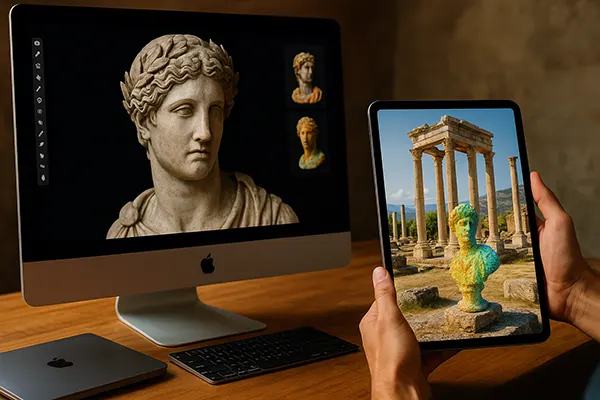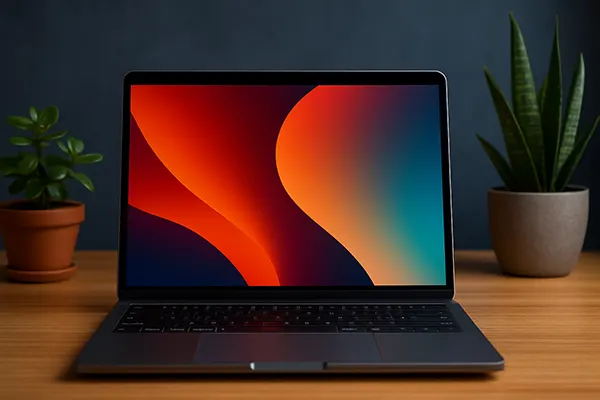
Digital Archives of Antiquity: How Apple and Modern Technologies Preserve Classical Heritage
In 2025, technology has become an essential bridge between the past and the future. Companies like Apple are no longer just developing devices or software—they are key players in cultural preservation. Through advanced digital tools, artificial intelligence, and immersive experiences, Apple helps historians and researchers protect the fragile legacy of ancient civilisations, ensuring that knowledge, art, and architecture of antiquity remain accessible to future generations.
Apple’s Role in Digitising Historical Heritage
Apple has consistently invested in projects that blend culture and technology. In cooperation with leading museums and universities, the company supports large-scale initiatives to scan, catalogue, and store ancient artefacts in high resolution. These digital archives allow experts to study inscriptions, materials, and structures without the need to handle the originals, reducing the risk of physical damage.
Projects such as “Rome Reborn” and “Ancient World AR” use Apple’s LiDAR and augmented reality capabilities to recreate ancient sites in full 3D detail. Through the integration of ARKit and photogrammetry, users can now explore the Parthenon, Pompeii, or the Library of Alexandria from their iPhones and iPads, gaining an authentic educational experience.
Apple’s approach focuses on accuracy and accessibility. By leveraging the performance of its M3 processors and advanced image recognition algorithms, Apple ensures that every digital reconstruction meets scientific standards and can be used by educators and researchers worldwide. The success of such projects also depends on the broader digital environment that supports innovation and connectivity—an aspect discussed in more depth at https://dslanbietern.de/en/, where technology’s evolving role in everyday use is explored from a wider perspective.
Artificial Intelligence and Preservation Accuracy
Artificial intelligence plays a crucial role in Apple’s heritage initiatives. Using machine learning, AI tools can analyse damaged manuscripts, restore missing fragments, and even reconstruct colours that have faded over centuries. Apple’s Core ML technology helps museums process thousands of images quickly, identifying stylistic and material similarities across artefacts.
Moreover, neural networks trained on Apple Silicon hardware support linguistic reconstruction of ancient texts. For instance, the deciphering of Etruscan inscriptions and ancient Greek manuscripts has become faster thanks to AI models that predict context based on partial words or symbols. This process opens new opportunities for academic discovery.
Importantly, Apple’s AI ethics framework ensures transparency and accountability. The company emphasises that digital reconstructions are not replacements for historical artefacts but tools that complement scholarly research and education.

Digital Museums and Public Access
The rise of digital museums marks a turning point in cultural preservation. Apple’s collaborations with the British Museum, the Vatican Archives, and UNESCO promote the idea that heritage belongs to everyone. Through curated digital collections available on Apple devices, users can explore interactive exhibitions and 3D artefacts without leaving their homes.
In 2025, Apple has also expanded the accessibility features of its ecosystem. VoiceOver, real-time translation, and immersive AR tours enable people with disabilities or language barriers to engage with historical materials equally. This commitment aligns with the global agenda for inclusive education and digital equality.
Furthermore, Apple’s iCloud infrastructure ensures the secure storage and synchronisation of vast historical databases. By using end-to-end encryption and decentralised backups, digital archives remain protected against data loss, ensuring that the treasures of antiquity survive both time and technology shifts.
Future of Classical Preservation
The collaboration between Apple and cultural institutions continues to redefine how humanity perceives its history. By integrating advanced sensors, AI, and augmented reality into archaeology and museum studies, technology transforms static relics into dynamic educational tools. Students and scholars can now engage with history interactively, strengthening emotional and intellectual connections with the past.
As research expands, new technologies such as spatial computing and quantum imaging promise even more detailed reconstructions. Apple’s ongoing innovation ensures that each generation will have better access to human civilisation’s earliest achievements, free from geographical or economic limitations.
Preserving the classical world through modern technology is not just a scientific mission—it’s a moral responsibility. Thanks to companies like Apple, the dialogue between ancient and digital cultures continues, shaping a future where knowledge and memory are truly eternal.
Related articles
-
 MacBook 2025: Real Changes Brought by...
MacBook 2025: Real Changes Brought by...The 2025 MacBook generation marks a significant stage in Apple’s …
-
 Key Features of Renting a Server
Key Features of Renting a ServerThe World Wide Web is now increasingly being used to …
-
 Health and Wellness Accessories: The ...
Health and Wellness Accessories: The ...The Apple Watch remains one of the most advanced wearable …
